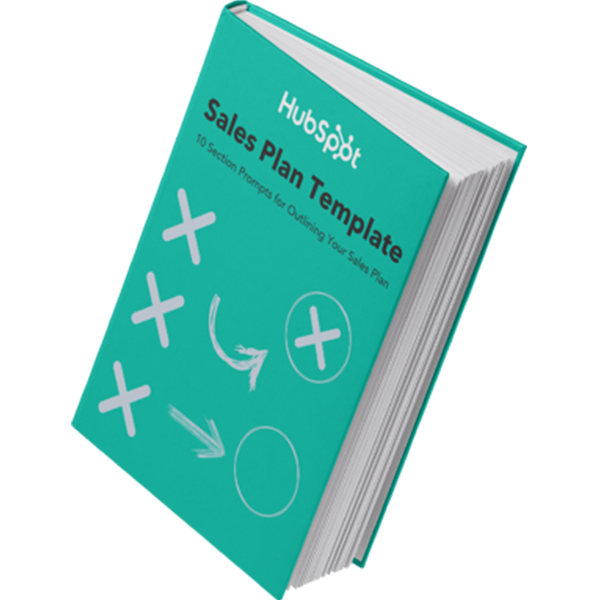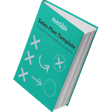Over the course of my career, I’ve learned firsthand that one of the most important steps in an effective sales process is the identification of a prospect’s pain. But what does it take to do that?
In my experience, the Sandler pain funnel is one of the most reliable methods to uncover a prospect’s pain. In some cases, your prospect might not even fully grasp their own pain points. But, as a salesperson, you have to know why a potential customer needs your offering before you can explain what they stand to gain from it.
That’s where the pain funnel comes in. In this article, I’ll discuss how the pain funnel works, provide a sample script you can use for inspiration, and share some of my personal favorite tips to help anyone make the most of this methodology.
Table of Contents
- What is the Sandler pain funnel?
- Pain Funnel Questions
- How to Use the Sandler Pain Funnel
- Sandler Pain Funnel Sample Script
- Putting the Pain Funnel Sales Technique Into Practice
- To Identify a Prospect’s Pain, Just Get Them Talking
What is the Sandler pain funnel?
The Sandler pain funnel is a systematic series of open-ended questions and statements designed to uncover prospects’ pain points through shared emotional understanding. It was invented by David H. Sandler as part of his , a methodology that suggests reps should act like consultants instead of pushy salespeople when engaging with prospects.
Sandler Selling is customer-centric, and the pain funnel reflects that. The funnel isn’t a pitch. It’s not abrasive or in-your-face. And, perhaps most counterintuitively, its endgame isn’t always to make a sale.
The pain funnel is used to identify whether a solution suits a customer’s needs and whether a sale is viable — and if the answer is no, then this framework does not encourage the salesperson to continue to push the sale.
However, if a salesperson does determine that a customer is a good fit, then they can use the information they gather through their pain funnel conversations to conduct a more well-informed, targeted, and effective sales process.
Indeed, as , “The Sandler Pain Funnel isn’t designed to sell something to someone.” To the contrary, Shaw argues that the pain funnel is “designed to help someone uncover whether their issue is compelling enough to take action to change.”
Shaw is a sales coach and former account executive for Officeworks LLC. She continues, “A salesperson cannot convince a buyer that their issues are important enough to solve; they can only help them discover that through asking unbiased questions, holding up the mirror, and supporting the buyer along the way.”
In other words, the primary purpose of the pain funnel is to reveal the key pain that a prospect is dealing with. To do so, the funnel invites salespeople to use a structured line of open-ended questioning. These questions start at a fairly broad level, and then they gradually narrow down to more and more specific topics.

Importantly, the pain funnel is a general approach to navigating a sales conversation. It’s not a specific set of questions or a word-for-word script you can follow to the tee. That said, there are a number of standard question formats that tend to work well with this methodology.

Free Sales Plan Template
Outline your company's sales strategy in one simple, coherent sales plan.
- Target Market
- Prospecting Strategy
- Budget
- Goals
Download Free
All fields are required.

You're all set!
Click this link to access this resource at any time.
Pain Funnel Questions
The first step is to get a general sense of the area where your potential customer is likely experiencing a challenge. Then, you can use the pain funnel to dive in deeper and get a clearer understanding of that pain.
Not sure where to start? Here are some of my favorite questions to use when implementing the Sandler pain funnel in sales (note that these go in sequence, starting from broader at the top and then getting narrower and more specific):
- “Tell me more about that …”
- “Can you be more specific?”
- “Give me an example…”
- “How long has that been a problem?”
- “What have you tried to do about that?”
- “Has anything you’ve tried so far worked?”
- “How much do you think this has cost you?”
- “How do you feel about how much this has cost you?”
- “What kind of trouble does that cause you?”
- “Have you given up trying to deal with this problem?”
Remember: The questions you actually ask might not wind up matching the ones listed above verbatim — and that’s okay. However, to implement the pain funnel effectively, you should aim to have your conversation at least follow a similar trajectory.

Free Sales Plan Template
Outline your company's sales strategy in one simple, coherent sales plan.
- Target Market
- Prospecting Strategy
- Budget
- Goals
Download Free
All fields are required.

You're all set!
Click this link to access this resource at any time.
How to Use the Sandler Pain Funnel

So, what does it take to put the Sandler pain funnel into action? I always recommend starting by using a to define your overall sales strategy. Then, once you’re ready to use the Sandler pain funnel in sales, I find that it’s helpful to break the methodology down into three stages.
Stage 1: Problem Identification
The first stage of the Sandler pain funnel is the problem identification stage. In this stage, you’ll want to gather information about the problem or hurdle that the prospect is struggling with.
For now, you can keep the conversation fairly high-level. For example, if you’re selling office furniture, you might ask the potential customer questions about their current office setup and invite them to share any complaints they may have.
Through this line of questioning, you may discover a theme or broad issue, such as uncomfortable office chairs or wobbly desks. To start to get a better sense of the problem, you can ask them some of the questions from the top of the funnel shown above, e.g.:
- “Tell me more about that …”
- “Can you be more specific?”
- “Give me an example…”
Pro tip: When asking these questions, make sure to keep it friendly and casual. As Senior Account Director at Salesforce , when using the pain funnel, it’s important to “maintain a conversational tone to avoid an interrogative feel.”
Stage 2: Cost Implications
Next, once you’ve identified a general problem area, it’s time to hone in on the cost implications of that problem. In this stage, you can start asking more specific questions that get at the practical consequences of the issue.
For example, returning to our office furniture example, you might ask about the impact on productivity associated with faulty desks. You could also ask about the harm that sitting in uncomfortable chairs may be doing both to employees’ physical health and to team morale.
To move the conversation toward quantifying these issues, you can focus on some of the questions from the middle of the funnel, such as:
- “What have you tried to do about that?”
- “Has anything you’ve tried so far worked?”
- “How much do you think this has cost you?”
Pro tip: Remember, not all costs are monetary. , president of the sales consultancy Mattson Enterprise, speaks eloquently about the range of costs that salespeople should consider.
He that “costs aren’t always measured in dollars and cents.” He goes on, “In the world of sales, it’s crucial to consider intangible factors such as industry status, reputation, and personal career implications. These elements often weigh heavily in your prospect’s decision-making process.”
Stage 3: Emotional Impact
Finally, in the last stage of the pain funnel, it’s time to get to the bottom of the prospect’s pain point. How exactly does this challenge make your prospect feel? What is the emotional impact of the costs you’ve been talking about?
In some cases, I’ve found that my prospects can be as surprised as I am to discover just how emotional an issue really is for them. For example, potential office furniture customers might not think that a wobbly desk is such a big deal. However, if they do the math, they might realize that employees with broken desks are 20% less productive than their counterparts with up-to-date furniture.
Or perhaps, they notice that several of their top employees developed chronic back issues that may have stemmed from their sub-par office chairs, and some have even left the company as a result. Then, they may discover a surprisingly strong emotional reaction!
To unearth the emotional impact that the pain you’ve identified is having on your prospect and their organization, encourage them to think deeply about how they really feel. This works best when done in a natural, organic conversational flow, but the following questions from the bottom of the pain funnel can offer some helpful inspiration:
- “How do you feel about how much this has cost you?”
- “What kind of trouble does that cause you?”
- “Have you given up trying to deal with this problem?”
Pro tip: Never underestimate the power of emotion. As , the third stage of the pain funnel helps salespeople “understand how these issues resonate with…prospects on an emotional and personal level. Are they stressed, frustrated, or overwhelmed? This emotional connection can be a powerful motivator for seeking a solution.”
Sandler Pain Funnel Sample Script
Of course, when it comes to real-world sales calls, it can be tricky to go from a theoretical model to an effective, engaging conversation. To help you put these ideas into practice, I developed a short, fictional script illustrating the pain funnel in action.
Feel free to use the sample below as inspiration when preparing for your own prospecting calls!
Salesperson: Hi [Prospect’s Name], thanks so much for taking the time to meet today. I understand you’re dealing with some challenges related to your office furniture, particularly with your desks and chairs. Could you tell me a little more about what’s been going on?
Prospect: Yes, we’ve had a lot of complaints about the chairs and desks recently. Employees are saying that the chairs are uncomfortable, and several desks are wobbly, which is really frustrating for the team.
Salesperson: I see. That sounds frustrating. How long has this been a problem for your team?
Prospect: It’s been like this for years, but it’s definitely gotten worse over the last few months.
Salesperson: Hmm, that’s concerning. When employees are dealing with discomfort like that every day, do you think it’s affecting their work?
Prospect: Well, it’s definitely affecting productivity. People complain about back pain or aches from the chairs, and the wobbling desks make it hard to focus, especially during Zoom meetings. Some of our employees are even taking more breaks just to walk around or stretch.
Salesperson: That must be taking a toll on both productivity and team morale. Have you noticed any other issues, like increased absenteeism or disengagement?
Prospect: Actually, yes. We’ve had a few people mention that they’re thinking about switching jobs because the office feels so run down. And there’s just an overall sense of frustration in the building. People seem less motivated to get their work done.
Salesperson: Wow, that must be tough. When employees are uncomfortable and disengaged, it can really affect the entire culture of the organization. What would it mean for your team if this issue isn’t addressed?
Prospect: It would be huge. If employees keep leaving or disengaging, we’ll have a harder time retaining talent. Plus, the productivity losses are starting to add up. It’s hard to put an exact number on it, but we’re definitely losing valuable work hours every week.
Salesperson: Totally — it sounds like there’s a real risk of both morale and productivity taking a significant hit if this goes on much longer. What do you think the cost to the company would be if the issue continued? I’m talking not just in terms of lost productivity but also potential turnover, hiring costs, and the impact on team performance.
Prospect: Honestly, we could be looking at a much bigger problem if we don’t fix this soon. I can see this potentially increasing our hiring costs or contributing to long-term employee burnout. It’s a bit overwhelming, to be honest.
At this point, the salesperson has identified a clear problem with a major cost and emotional impact. Now, all they have to do is transition to the solution and close the deal:
Salesperson: I can see why this is a major concern. Now, imagine if your team had ergonomic, comfortable chairs and sturdy desks that supported both their health and their productivity. What do you think that would do for the work environment and the team’s overall performance?
Prospect: That could make a huge difference. People would be more comfortable, they’d be able to focus better, and I imagine they’d feel more engaged and less likely to leave. We’d definitely see a boost in productivity.
Salesperson: I think so too! Investing in high-quality office furniture that prioritizes comfort and durability can completely transform the workplace environment.
It sounds like addressing these pain points would not only improve employee health but also reduce turnover and help boost overall performance. And based on what you’re saying, it seems like this is something that needs to be addressed sooner rather than later. Would you like to explore a few options and see how quickly we can find you some sturdier desks and chairs?
Prospect: Sounds great, thank you!

Free Sales Plan Template
Outline your company's sales strategy in one simple, coherent sales plan.
- Target Market
- Prospecting Strategy
- Budget
- Goals
Download Free
All fields are required.

You're all set!
Click this link to access this resource at any time.
Putting the Pain Funnel Sales Technique Into Practice
The Sandler System’s Pain Funnel is all about digging deep, teasing out real answers from prospects, and letting them come to conclusions on their own that they might not have even considered before. And take it from me: That’s no small task.
You can’t get there by dominating the conversation, drawing quick conclusions, or trying to wrap up a conversation as soon as you get even a modicum of resistance. Leveraging the pain funnel successfully takes patience and thoughtfulness.
After all, the pain funnel questions are all open-ended. Getting the most out of open-ended questions often means embracing silence and giving your prospect the space to sift through their thoughts. The prospect can then identify their feelings and put those complex emotions into words.
That said, the pain funnel isn’t entirely without structure. The Sandler pain funnel is organized strategically, and the order in which the questions are listed isn’t arbitrary.
To be sure, that doesn’t mean you have to adhere to the order rigidly or only ask the exact questions listed above. As with any sales strategy, the best salespeople will retain some wiggle room to improvise, read the room, and adapt accordingly.
Still, I definitely recommend using the standard Sandler sequence as a backbone for your conversations. Go with the flow as needed, but do try to stay consistent with it when you can. And no matter what, make sure to keep the conversation open-ended and focused on exposing and understanding the pain points your prospect is facing.
To Identify a Prospect’s Pain, Just Get Them Talking
At the end of the day, any purchase is pointless if there’s no pain behind it. Time and time again, I’ve learned that there has to be some kind of need or interest motivating a prospect to buy. As salespeople, it’s up to us to bring that pain to light … and then offer a solution to put it to rest.
At its core, the Sandler System’s pain funnel is incredibly simple: It’s just about getting the potential customer talking — and then really listening to what they have to say. But with a bit of structure (and a lot of patience), this straightforward methodology can set you up for lasting sales success.

Free Sales Plan Template
Outline your company's sales strategy in one simple, coherent sales plan.
- Target Market
- Prospecting Strategy
- Budget
- Goals
Download Free
All fields are required.

You're all set!
Click this link to access this resource at any time.











